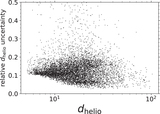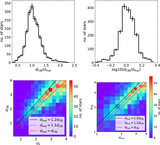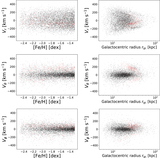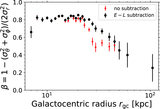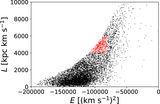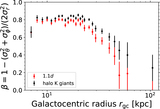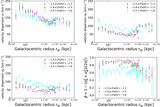Image Details
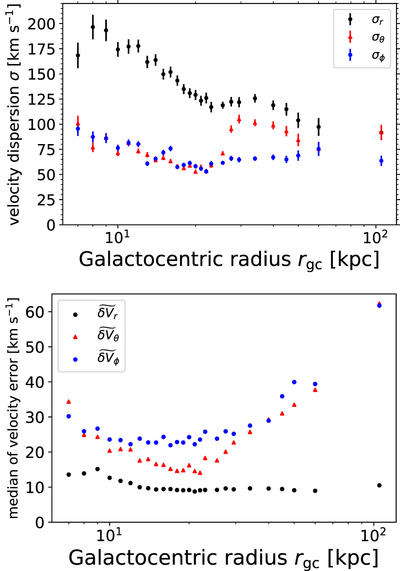
Caption: Figure 4.
Upper panel: three velocity dispersion components (﹩{\sigma }_{r},{\sigma }_{\theta },{\sigma }_{\phi }﹩) computed from the total sample of 7664 halo K giants. Each marker represents the end of our selected radial bins. The first bin contains stars within rgc = 5–7 kpc. Each consecutive bin is of width 1 kpc up to the bin ending at rgc = 30 kpc, after which our bin sizes progressively increase. The remaining bins end at rgc = 32, 35, 40, 45, 50, 60, and 105 kpc. Error bars are estimated from the Poissonian sampling in each bin. Lower panel: median errors (﹩\widetilde{\delta {V}_{r}},\widetilde{\delta {V}_{\theta }},\widetilde{\delta {V}_{\phi }}﹩) on the velocities as a function of Galactocentric radius, for the same bins as in the upper panel. The error estimates for each star are propagated from the LAMOST distance errors, LAMOST line-of-sight velocity errors, and two proper motion error estimates from Gaia DR2.
Copyright and Terms & Conditions
© 2019. The American Astronomical Society. All rights reserved.


